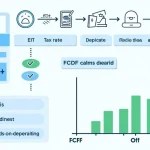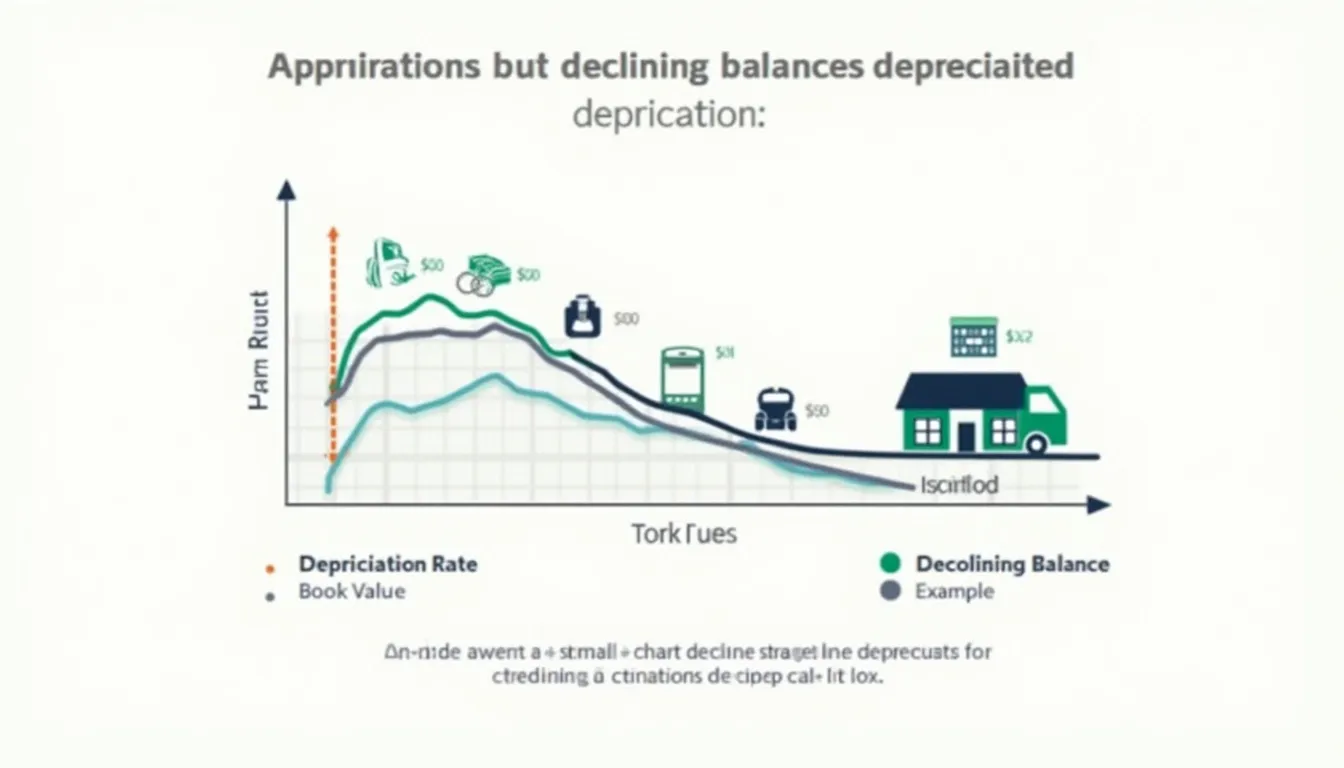Free Cash Flow to Firm (FCFF) Calculator
Is this tool helpful?
How to Use the FCFF Calculator Effectively
Our Free Cash Flow to Firm (FCFF) Calculator is designed to help you quickly and accurately determine your company’s FCFF. Follow these simple steps to get started:
- Enter your company’s total sales revenue for the period in USD.
- Input the total operating expenses for the period in USD.
- Provide the total depreciation expense for the period in USD.
- Enter the total interest expense for the period in USD.
- Input the tax rate as a percentage (between 0 and 100).
- Enter the fixed capital investment for the period in USD.
- Provide the working capital investment for the period in USD.
- Click the “Calculate FCFF” button to see your results.
The calculator will then display the following results:
- Earnings Before Interest, Taxes, Depreciation, and Amortization (EBITDA)
- Earnings Before Interest and Taxes (EBIT)
- Net Income
- Free Cash Flow to Firm (FCFF)
Understanding Free Cash Flow to Firm (FCFF)
Free Cash Flow to Firm (FCFF) is a crucial financial metric that measures the amount of cash a company generates after accounting for all operating expenses, taxes, and necessary investments in operating capital. This figure represents the cash available to all investors, including shareholders and debtholders, making it a vital indicator of a company’s financial health and ability to generate value.
The FCFF calculation takes into account various financial components, including sales, operating costs, depreciation, interest expenses, taxes, and investments in fixed and working capital. By considering these factors, FCFF provides a comprehensive view of a company’s cash-generating capabilities, free from the influence of capital structure decisions.
The FCFF Formula
The formula for calculating Free Cash Flow to Firm (FCFF) is as follows:
$$ FCFF = EBIT \times (1 – \text{Tax Rate}) + \text{Depreciation} – \text{Fixed Capital Investment} – \text{Working Capital Investment} $$Where:
- EBIT = Earnings Before Interest and Taxes
- Tax Rate = The company’s effective tax rate
- Depreciation = Non-cash expense for the period
- Fixed Capital Investment = Investment in long-term assets
- Working Capital Investment = Changes in short-term assets and liabilities
Benefits of Using the FCFF Calculator
Our FCFF Calculator offers numerous advantages for financial analysts, investors, and business owners:
- Time-saving: Quickly compute FCFF without the need for complex manual calculations.
- Accuracy: Minimize the risk of errors associated with manual calculations.
- Consistency: Ensure uniform FCFF calculations across different periods or companies.
- Accessibility: Calculate FCFF anytime, anywhere, using any device with internet access.
- Comprehensive results: Obtain not just FCFF, but also intermediate financial metrics like EBITDA, EBIT, and Net Income.
- Decision support: Use the results to make informed financial decisions and valuations.
- Educational tool: Learn about the components of FCFF and how they interact.
Addressing User Needs and Solving Specific Problems
Our FCFF Calculator addresses several key user needs and solves specific problems in financial analysis:
1. Valuation Accuracy
For investors and analysts, accurate company valuation is crucial. The FCFF Calculator provides a reliable basis for discounted cash flow (DCF) analysis, enabling more precise company valuations. By inputting the required financial data, users can quickly obtain the FCFF figure, which serves as a foundation for projecting future cash flows and determining a company’s intrinsic value.
2. Performance Evaluation
Business owners and managers can use the FCFF Calculator to assess their company’s financial performance over time. By comparing FCFF across different periods, they can identify trends in cash generation and evaluate the effectiveness of their operational and investment decisions. This information is invaluable for strategic planning and performance improvement initiatives.
3. Capital Budgeting
The FCFF Calculator aids in capital budgeting decisions by providing insights into a company’s cash-generating ability. This information helps managers determine how much capital is available for investments, dividends, or debt repayment. By understanding the impact of various financial components on FCFF, decision-makers can optimize their capital allocation strategies.
4. Comparative Analysis
Investors and analysts often need to compare the financial performance of multiple companies. The FCFF Calculator facilitates this process by providing a standardized method for calculating FCFF across different firms. This enables more accurate comparisons, especially when companies have varying capital structures or tax situations.
5. Financial Modeling
Financial professionals engaged in building complex financial models can use the FCFF Calculator to verify their calculations or as a starting point for more detailed analyses. The calculator’s breakdown of intermediate metrics (EBITDA, EBIT, Net Income) provides valuable inputs for comprehensive financial modeling.
Practical Applications and Use Cases
To illustrate the practical applications of our FCFF Calculator, let’s consider some real-world scenarios:
Case Study 1: Tech Startup Valuation
Imagine you’re a venture capitalist evaluating a promising tech startup. The company has the following financial data:
- Sales: $10,000,000
- Operating Cost: $7,000,000
- Depreciation: $500,000
- Interest: $200,000
- Tax Rate: 25%
- Fixed Capital Investment: $1,000,000
- Working Capital Investment: $300,000
Using our FCFF Calculator, you can quickly determine that the startup’s FCFF is $1,075,000. This figure provides a solid foundation for projecting future cash flows and estimating the company’s value, helping you make an informed investment decision.
Case Study 2: Retail Chain Performance Analysis
Consider a retail chain looking to evaluate its financial performance over the past year. The company’s financial data is as follows:
- Sales: $500,000,000
- Operating Cost: $400,000,000
- Depreciation: $20,000,000
- Interest: $15,000,000
- Tax Rate: 30%
- Fixed Capital Investment: $25,000,000
- Working Capital Investment: $10,000,000
Using the FCFF Calculator, the company determines its FCFF to be $41,000,000. By comparing this figure to previous years’ results, management can assess whether the company’s cash-generating ability has improved and make data-driven decisions about future investments and expansion plans.
Case Study 3: Comparing Investment Opportunities
An institutional investor is comparing two potential investments in the manufacturing sector. Company A and Company B have the following financial data:
Company A:
- Sales: $200,000,000
- Operating Cost: $150,000,000
- Depreciation: $10,000,000
- Interest: $5,000,000
- Tax Rate: 28%
- Fixed Capital Investment: $15,000,000
- Working Capital Investment: $5,000,000
Company B:
- Sales: $180,000,000
- Operating Cost: $130,000,000
- Depreciation: $8,000,000
- Interest: $4,000,000
- Tax Rate: 25%
- Fixed Capital Investment: $12,000,000
- Working Capital Investment: $4,000,000
Using the FCFF Calculator, the investor can quickly determine that Company A has an FCFF of $18,800,000, while Company B has an FCFF of $20,600,000. Despite lower sales, Company B generates more free cash flow, which could make it a more attractive investment opportunity.
Frequently Asked Questions (FAQ)
1. What is the difference between FCFF and FCFE?
Free Cash Flow to Firm (FCFF) represents the cash available to all investors, including both equity holders and debt holders. Free Cash Flow to Equity (FCFE), on the other hand, represents the cash available only to equity holders after accounting for debt payments and issuances.
2. Why is FCFF important for company valuation?
FCFF is crucial for company valuation because it provides a clear picture of a company’s ability to generate cash, regardless of its capital structure. This makes it an ideal metric for comparing companies with different debt levels and for use in discounted cash flow (DCF) analysis.
3. How often should I calculate FCFF?
FCFF is typically calculated on an annual basis, but it can also be computed quarterly or semi-annually. Regularly calculating FCFF helps track a company’s financial performance and cash-generating ability over time.
4. Can FCFF be negative?
Yes, FCFF can be negative. A negative FCFF indicates that a company is not generating enough cash from its operations to cover its capital expenditures and working capital needs. This could be due to high investment costs, poor profitability, or both.
5. How does FCFF relate to company growth?
A growing FCFF generally indicates that a company is expanding its operations and increasing its ability to generate cash. However, a temporarily decreasing FCFF might not always be negative if it’s due to significant investments that are expected to generate higher cash flows in the future.
6. Is a higher FCFF always better?
While a higher FCFF is generally positive, it’s important to consider the context. A very high FCFF might indicate that a company is underinvesting in its business, which could harm long-term growth prospects. The ideal FCFF should balance current cash generation with investments for future growth.
7. How does FCFF differ from net income?
FCFF differs from net income in several ways. FCFF accounts for non-cash expenses like depreciation, excludes non-operating items, and considers changes in working capital and capital expenditures. Net income, on the other hand, is an accounting measure that doesn’t necessarily reflect a company’s cash-generating ability.
8. Can I use FCFF to compare companies in different industries?
Yes, FCFF can be used to compare companies across different industries. However, it’s important to consider industry-specific factors that might affect FCFF, such as capital intensity or growth rates. Using relative measures like FCFF yield (FCFF divided by enterprise value) can provide more meaningful comparisons.
9. How does inflation affect FCFF?
Inflation can impact FCFF in various ways. It may increase revenues and costs, affecting operating income. It can also influence capital expenditure needs and working capital requirements. When using FCFF for valuation purposes, it’s important to consider whether the projections are in real or nominal terms.
10. Is the FCFF Calculator always accurate?
While our FCFF Calculator is designed to provide accurate results based on the inputs provided, it’s important to note that we cannot guarantee that the webtool or results from our webtool are always correct, complete, or reliable. Our content and tools might have mistakes, biases, or inconsistencies. Users should always verify the results and consult with financial professionals for important decisions.
Conclusion: Harness the Power of FCFF for Smarter Financial Decisions
The Free Cash Flow to Firm (FCFF) Calculator is an invaluable tool for anyone involved in financial analysis, investment decision-making, or business management. By providing quick and accurate FCFF calculations, this tool empowers users to:
- Conduct more precise company valuations
- Evaluate financial performance effectively
- Make informed capital budgeting decisions
- Perform meaningful comparative analyses
- Enhance financial modeling capabilities
Understanding and utilizing FCFF can significantly improve your ability to assess a company’s true financial potential and make data-driven decisions. Whether you’re an investor looking for the next big opportunity, a financial analyst striving for accuracy in your models, or a business owner aiming to optimize your company’s performance, our FCFF Calculator is here to support your financial journey.
Take advantage of this powerful tool today and unlock new insights into the cash-generating abilities of businesses. Remember, in the world of finance, cash is king, and FCFF is your key to understanding how effectively a company rules its financial kingdom.
Start using our Free Cash Flow to Firm Calculator now and take the first step towards more informed, confident financial decision-making!
Important Disclaimer
The calculations, results, and content provided by our tools are not guaranteed to be accurate, complete, or reliable. Users are responsible for verifying and interpreting the results. Our content and tools may contain errors, biases, or inconsistencies. We reserve the right to save inputs and outputs from our tools for the purposes of error debugging, bias identification, and performance improvement. External companies providing AI models used in our tools may also save and process data in accordance with their own policies. By using our tools, you consent to this data collection and processing. We reserve the right to limit the usage of our tools based on current usability factors. By using our tools, you acknowledge that you have read, understood, and agreed to this disclaimer. You accept the inherent risks and limitations associated with the use of our tools and services.







